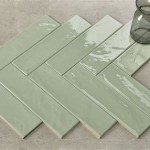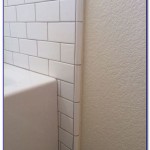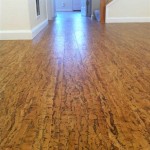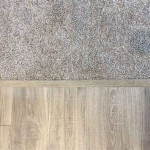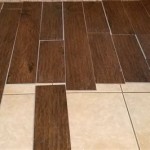```html
How To Put Mosaic Tile On Bathroom Wall
Applying mosaic tile to a bathroom wall can significantly enhance the aesthetic appeal of the space. The process, while seemingly intricate, is manageable for many DIY enthusiasts with careful planning and execution. This article outlines the necessary steps to successfully install mosaic tile on a bathroom wall, covering preparation, application, and finishing touches.
Preparing the Surface
Proper surface preparation is paramount for a successful mosaic tile installation. The wall must be clean, level, and structurally sound. Any existing paint, wallpaper, or loose debris should be thoroughly removed. A scraper and sandpaper can be used to achieve a smooth surface. It is important to note that the preparation stage often dictates the longevity and visual appeal of the final installation.
Assess the wall for unevenness. Use a level and a straight edge to identify any significant dips or bumps. Smaller imperfections can be addressed with a thin coat of patching compound. For larger irregularities, consider using a leveling compound designed for walls. Allow the patching or leveling compound to dry completely according to the manufacturer's instructions, and then sand it smooth.
Once the surface is smooth and clean, apply a waterproofing membrane. This is particularly important in bathrooms, which are prone to moisture. Follow the manufacturer's directions for application, ensuring all surfaces are adequately covered. The waterproofing membrane will prevent water from seeping behind the tiles and damaging the wall structure. Common waterproofing options include liquid membranes and sheet membranes. Liquid membranes are applied with a brush or roller, while sheet membranes are self-adhesive and require careful application to avoid air pockets.
After the waterproofing membrane has dried, apply a primer specifically designed for tile installation. The primer promotes adhesion between the waterproofing membrane and the thin-set mortar. Choose a primer that is compatible with both the waterproofing membrane and the type of thin-set mortar you will be using. Allow the primer to dry completely before proceeding to the next step. This step is crucial for establishing a strong bond between the tile and the wall, preventing future cracking or detachment.
Applying the Mosaic Tile
Once the surface is properly prepared, the next step is to apply the mosaic tile. This involves careful planning, precise measurements, and the correct application of thin-set mortar. A dry layout is highly recommended to visualize the final appearance and to identify any potential issues before adhering the tiles permanently.
Begin by finding the center point of the wall, both vertically and horizontally. Use a level and a measuring tape to ensure accuracy. From the center point, draw vertical and horizontal guidelines using a pencil or chalk line. These guidelines will serve as a reference for laying the first row of mosaic tile sheets. Maintaining accurate guidelines is essential for ensuring a symmetrical and aesthetically pleasing installation.
Mix the thin-set mortar according to the manufacturer's instructions. Use a mixing drill with a paddle attachment to achieve a smooth, consistent consistency. Avoid adding too much water, as this can weaken the mortar and affect its adhesive properties. Let the mixture slake for the recommended time, then remix briefly before use. This allows the polymers in the mortar to fully activate, ensuring optimal bonding strength.
Apply a thin, even layer of thin-set mortar to a small section of the wall using a notched trowel. The size of the notch on the trowel will depend on the size and type of mosaic tile being used. Consult the tile manufacturer's recommendations for the appropriate trowel size. Hold the trowel at a 45-degree angle to the wall and create ridges in the mortar. These ridges provide channels for air to escape and ensure proper adhesion.
Carefully place the mosaic tile sheets onto the mortar, aligning them with the guidelines. Press the tiles firmly into the mortar to ensure good contact. Use a rubber grout float to tap the tiles gently, ensuring they are level and uniformly embedded in the mortar. Avoid applying excessive pressure, which can damage the tiles or squeeze out too much mortar.
Work in small sections, applying mortar and setting tiles sheet by sheet. This prevents the mortar from drying out before the tiles are applied. Periodically check the levelness of the tiles using a level. Adjust the tiles as needed to maintain a consistent surface. Cut the mosaic tile sheets to fit around obstacles such as pipes or outlets using a wet saw or tile nippers. Ensure the cuts are clean and precise for a professional finish.
Allow the thin-set mortar to cure completely according to the manufacturer's instructions, typically 24 to 72 hours. Avoid disturbing the tiles during this time. Once the mortar is fully cured, the next step is to remove any excess mortar from the tile surface and grout lines.
Grouting and Sealing
After the thin-set mortar has cured, the final stage involves grouting the tile and sealing the grout lines. This process fills the gaps between the tiles, creating a waterproof and visually appealing surface. Choosing the right grout color and sealant is crucial for complementing the mosaic tile and protecting it from moisture and stains.
Remove any spacers or debris from between the tiles. Use a utility knife or grout saw to carefully remove any hardened mortar that may be protruding from the grout lines. Ensure the grout lines are clean and free of obstructions before applying the grout. A clean grout line allows for proper grout adhesion and a consistent finish.
Mix the grout according to the manufacturer's instructions. Choose a grout color that complements the mosaic tile. A neutral grout color, such as white or gray, is often a safe choice. However, a contrasting grout color can create a more dramatic effect. Use a mixing drill with a paddle attachment to achieve a smooth, consistent consistency. Avoid adding too much water, as this can weaken the grout and affect its durability.
Apply the grout to the tile surface using a rubber grout float. Hold the float at a 45-degree angle to the wall and spread the grout diagonally across the tiles, forcing it into the grout lines. Ensure all grout lines are completely filled. Work in small sections to prevent the grout from drying out before you have a chance to clean it up.
Remove excess grout from the tile surface using the grout float. Hold the float at a 45-degree angle and scrape diagonally across the tiles, removing as much grout as possible. Avoid pressing too hard, as this can remove grout from the grout lines. Periodically clean the float with a damp sponge to remove excess grout and prevent it from hardening on the float.
After the initial grout removal, allow the grout to set for the recommended time, typically 15 to 30 minutes. Then, use a damp sponge to clean the remaining grout haze from the tile surface. Rinse the sponge frequently in clean water and wring it out thoroughly to avoid over-wetting the grout. Wipe the tiles in a circular motion to remove the haze without disturbing the grout lines.
Allow the grout to cure completely according to the manufacturer's instructions, typically 24 to 72 hours. Once the grout is fully cured, apply a grout sealer to protect the grout from moisture and stains. Apply the sealer using a brush or applicator pad, following the manufacturer's instructions. Allow the sealer to dry completely before exposing the tile to moisture. Regular cleaning and maintenance will help to keep the mosaic tile looking its best for years to come.
```
How Tile Mosaics Can Transform Your Bathroom

How To Install A Mosaic Tile Border

A Guide On How To Install Mosaic Splashback House Of Mosaics

How To Install Mosaic Tiles In The Bathroom Best Laying Methods

Decorating Your Bathroom With Mosaics A Practical Guide Tile Mountain
;?strip=all)
Remodeling A Bathroom With Mosaic Tile L Granite Transformations

7 Best Tips To Cut And Install Marble Mosaic Tile Easy Guide For Beginners Abbotts At Home

Remodeling A Bathroom With Mosaic Tile L Granite Transformations

How To Install Mosaic Tiling Tutorial Four Generations One Roof Blog

Diy Mosaic Tile Bathroom Mirror Centsational Style
Related Posts


